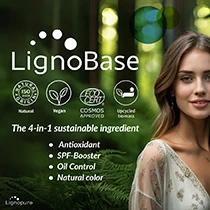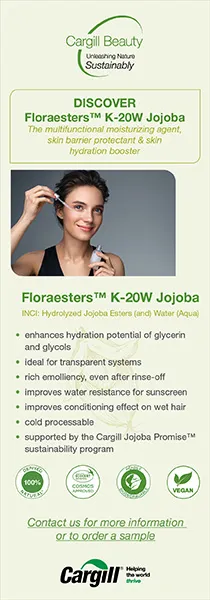EC identifies over 80 fragrance allergens with “obligation to label” for immune system protection

19 Sep 2022 --- A new draft by the European Commission (EC) lists 56 ingredients to be added to Regulation 1223/2009, summing-up more than 80 fragrances, individually required to be declared as allergens “if their concentration exceeds 0.001% in leave-on products and 0.01% in rinse-off products.” EC has flagged the amendment to the World Trade Organization, highlighting the objective of protecting human health.
The EC will publish the amendment in the first quarter of 2023, coming into force 20 days after publication, shares Cosmeservice. It is also open to comments within the next two months.
There is a potential risk to human health from using the additional fragrance allergens identified by the Scientific Committee on Consumer Safety. It is necessary to inform consumers about the presence of those fragrance allergens, justifies the draft.
The new ingredients will be listed in Annex III “of substances which cosmetic products must not contain except subject to the restrictions laid down. The draft measure further introduces some updates and simplifications in the names of those substances,” describes the EC.  Currently, 25 fragrance allergens are listed in Annex III of Regulation 1223/2009.
Currently, 25 fragrance allergens are listed in Annex III of Regulation 1223/2009.
What it means for market products
A three-year period will be provided to companies to place cosmetic products on the market that comply with the regulation. This will allow companies to revise documents and sort the labeling of products, adds Cosmeservice.
Additionally, five years will be provided for companies to remove the products from EU shelves that do not comply with the regulation. “This will allow companies to get rid of the stock and place revised products,” continues Cosmeservice.
Contact allergy risks
The EC defines fragrance substances as organic compounds with characteristic, usually pleasant, odors.
“They are widely used in perfumes and other perfumed cosmetic products, but also many other products such as detergents, fabric softeners and other household products.”
Moreover, exposure to fragrances that are allergens can lead to contact allergy.
“Contact allergy is a life-long, altered specific reactivity in the human immune system. Upon re-exposure to a sufficient amount of an allergen, eczema (allergic contact dermatitis) may develop,” The draft outlines.
“When a person has already been sensitized to an allergen, a much lower concentration of it is sufficient to trigger symptoms of an allergy. The percentage of the population allergic to fragrance allergens in the Union can be estimated to 1 to 9%.”  Fragrances are individually required to be declared as allergens if their concentration exceeds 0.001% in leave-on products and 0.01% in rinse-off products.
Fragrances are individually required to be declared as allergens if their concentration exceeds 0.001% in leave-on products and 0.01% in rinse-off products.
Primary and secondary prevention
There are two ways of protecting users from fragrance allergies – primary prevents acquiring allergies and secondary prevents developing allergies for sensitized individuals.
“For primary prevention, a restriction of fragrance allergens may be sufficient. However, sensitized persons may develop symptoms when exposed to lower concentrations of an allergen than the maximum permitted levels,” states the draft.
“Therefore, as a secondary prevention measure, it is important to provide information on the presence of individual fragrance allergens in cosmetic products so that sensitized persons can avoid contact with the substance to which they are allergic.”
Currently, 25 fragrance allergens are listed in Annex III of Regulation 1223/2009.
In other regulatory news, the European Chemicals Agency proposed eight new entries for its Registry of Intentions with proposed carcinogenic, mutagenic and reprotoxic chemical classifications, which will undergo regulatory processes that could impact their use in cosmetic products.
By Venya Patel












